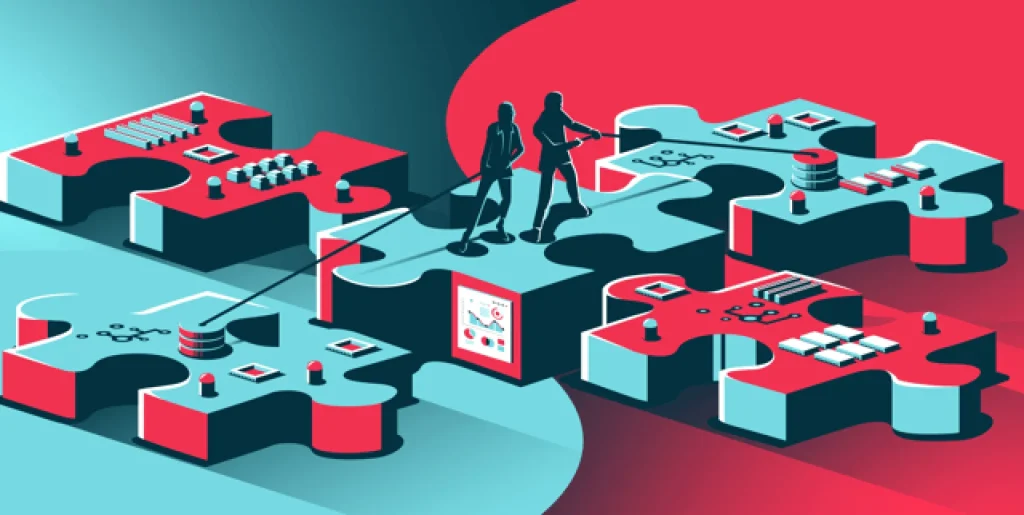Game development merges creativity and technology through various stages: pre-production, production, testing, launch, and post-launch. Key tools include game engines like Unity and Unreal Engine, graphics software such as Adobe Photoshop and Blender, and programming languages like C# and C++. Audio tools like FMOD and Wwise enhance player immersion, while version control systems like Git facilitate team collaboration. Essential hardware includes high-performance workstations, development kits, and testing equipment like gaming consoles and VR headsets. Effective communication tools like Slack and Jira are vital for project management. Understanding these tools enriches appreciation for the game development process.
Game Development 101: Understanding the Software and Hardware Tools of the Industry
Game development is a multifaceted process that combines creativity, technology, and artistry. It encompasses various stages, from concept initiation to finished product release, and requires a unique blend of software and hardware tools to bring ideas to life. This article explores the essential tools and technologies involved in game development, providing insights into the various disciplines within the industry.
The Game Development Process
Before diving into the tools used in game development, it’s essential to understand the typical stages involved in creating a game:
-
Pre-Production: This is the planning phase, where concepts, storylines, and game designs are fleshed out. This stage often includes prototyping and artistic direction.
-
Production: This is where the bulk of the game development occurs. Artists create assets, programmers write code, and designers implement gameplay mechanics.
-
Testing: Quality assurance (QA) testers play the game to identify bugs and improve playability.
-
Launch: The completed game is released to the public, often accompanied by marketing efforts.
- Post-Launch: Developers might provide updates, downloadable content (DLC), or patches as necessary based on player feedback.
Software Tools for Game Development
Game Engines
At the core of game development is the game engine, which serves as a software framework for building games. Popular engines include:
-
Unity: A widely-used game engine that supports both 2D and 3D game development. Its user-friendly interface and extensive asset store make it a favorite among indie developers.
-
Unreal Engine: Known for its stunning graphics, Unreal Engine is often used for high-fidelity AAA games. It features the blueprint visual scripting language, allowing designers to create gameplay mechanics without deep programming knowledge.
- CryEngine: While less common than Unity or Unreal, CryEngine offers remarkable visual capabilities and is known for producing visually rich environments.
Graphics Software
Visual content is a huge part of game development, and several software tools are essential to creating striking graphics:
-
Adobe Photoshop: For 2D art, texture creation, and UI design, Photoshop is a leading choice for many artists in the industry.
-
Blender: An open-source 3D modeling software that allows developers to create detailed 3D models, animations, and simulations.
- Maya: A professional-grade 3D modeling software used extensively in both the game and film industries. Its robust animation features make it an industry standard.
Programming Languages
Programming is critical in game development. Different engines may support various programming languages, but commonly used ones include:
-
C#: Primarily used with Unity, C# is known for its readability and ease of use, making it accessible to new developers.
-
C++: The backbone of Unreal Engine, C++ offers powerful performance capabilities and is widely used in high-performance games.
- JavaScript: Frequently used in browser-based games and when working with web technologies.
Audio Tools
Sound is an often-overlooked aspect of game development, but it plays a crucial role in player immersion. Tools include:
-
FMOD: A popular audio tool that provides developers with sound effects and music management capabilities.
- Wwise: Another audio tool used for creating adaptive soundtracks that respond to gameplay dynamically.
Version Control Systems
Game development often involves large teams, so version control systems are essential to keep track of changes and collaborate effectively. Tools like:
-
Git: A widely-used version control system that allows multiple developers to work on the same codebase without conflict.
- Perforce: Another source control management tool specifically designed for large binary files commonly used in game development.
Hardware Tools for Game Development
The hardware tools used in game development range from workstations for coding and asset creation to hardware for testing and performance optimization. These can include:
Development Machines
-
Workstations: High-performance computers with powerful CPUs and GPUs capable of running demanding game engines and rendering complex graphics.
- Dev Kits: Specialized hardware provided by console manufacturers (like PlayStation or Xbox) for developers to create and test games specifically for their platforms.
Testing Equipment
-
Gaming Consoles: Developers often use the actual consoles (like PlayStation, Xbox, or Nintendo Switch) to test their games and ensure they run smoothly on the target hardware.
- VR Headsets: For games intended for virtual reality, headsets like the Oculus Rift or HTC Vive are critical for testing immersion and gameplay mechanics.
Collaborative Tools
In today’s development environment, effective communication and collaboration are vital. Tools like:
-
Slack: A messaging platform that facilitates team communication, allowing members to coordinate on projects, share files, and have discussions in real time.
-
Trello: A project management tool that helps teams track tasks, deadlines, and progress within a game development cycle.
- Jira: A more specialized project management tool commonly used in software development, including game development.
Conclusion
Game development is a rich and complex field that requires a comprehensive understanding of both software and hardware tools. From the initial concept to the final product, effective collaboration among diverse teams utilizing the right tools significantly contributes to the creation of engaging and immersive gaming experiences. Whether you are an aspiring game developer, an avid gamer, or simply interested in the technical side of this industry, understanding these tools is essential to appreciating the effort that goes into creating your favorite games. As technology continues to advance, the tools available to developers will only become more sophisticated, paving new pathways for innovation in game design and development.
